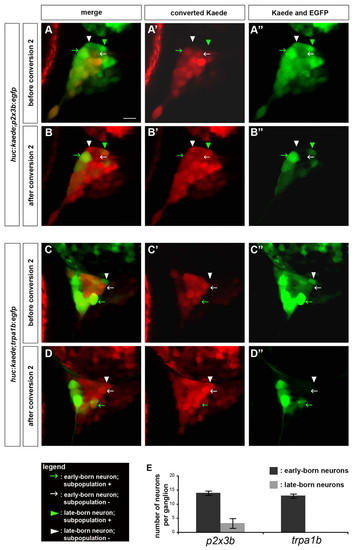
Late-born but not early-born neurons are restricted in their fate. Embryos carrying the huc:kaede transgene, together with either the p2x3b:egfp or the trpa1b:egfp transgene were analyzed using BAPTISM. (A-D) huc:kaede was first converted at 24 hpf, imaged at 72 hpf (A,C) and converted a second time (B,D). (A,B) In huc:kaede;p2x3b:egfp embryos, early-born neurons either express the subpopulation marker (green arrow) or do not (white arrow), and late-born neurons either express the subpopulation marker (green arrowhead) or do not (white arrowhead). (C,D) In huc:kaede;trpa1b:egfp embryos, early-born neurons either express the subpopulation marker (green arrow) or do not (white arrow). Late-born neurons do not express the subpopulation marker (white arrowhead). Side view, anterior towards the left. Scale bar: 10 μm. (E) The histogram represents the number of neurons per trigeminal sensory ganglion expressing the p2x3b or trpa1b subpopulation markers derived from either early-born neurons (dark gray) or late-born neurons (light gray). The error bars refer to the s.e.m. (n=7).
|

